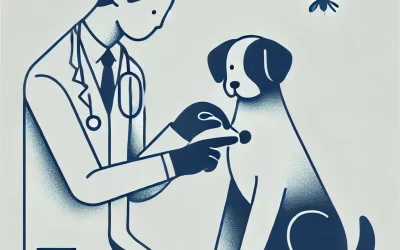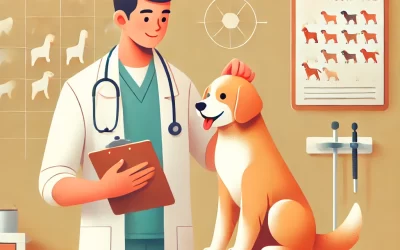Abriendo nuevos caminos en neurooncología canina: replanteando el diagnóstico y adoptando la radiocirugía estereotáctica
El mundo de la oncología veterinaria está siendo testigo de un cambio dramático a medida que la tecnología de vanguardia...
¿Cuánto tiempo puede vivir un perro con un tumor? Factores clave que afectan el tiempo de supervivencia
Descubrir que su perro tiene un tumor puede ser angustiante, y una de las primeras preguntas...
¿Cada bulto que tiene tu perro es un tumor? Cómo identificarlo y actuar
Como dueño de una mascota, descubrir un bulto en su perro puede ser alarmante. El primer pensamiento que suele surgir...
Combinación de terapias naturales con medicina convencional: elaboración de un plan holístico para el tratamiento de tumores en perros
Cuando a un perro amado se le diagnostica un tumor, puede ser una experiencia desgarradora para cualquier mascota...
¿El seguro para mascotas cubre los tratamientos contra tumores? Guía para elegir el plan adecuado
A medida que avanza la medicina veterinaria, los dueños de mascotas exploran cada vez más opciones de seguros para gestionar...
¿Qué hacer si tu gato tiene un tumor? Las terapias naturales pueden ser la clave
Descubrir que su amado gato tiene un tumor puede ser una experiencia angustiante. Mientras que el veterinario...
Signos tempranos de tumores en gatos: cómo las terapias naturales pueden ayudar al tratamiento
Como dueños de gatos devotos, garantizar la salud y el bienestar de nuestros compañeros felinos es una prioridad...
Esperanza para las mascotas con cáncer: cómo las terapias naturales pueden aliviar los efectos secundarios
El cáncer en las mascotas es una realidad desgarradora que ningún dueño de mascota desea afrontar. Los tratamientos, sin embargo...
Encontrando respuestas en la naturaleza: apoyo a base de hierbas para mascotas con cáncer
El cáncer es un diagnóstico desalentador para cualquier dueño de mascota. La idea de que nuestros amados compañeros peludos...
Cirugía de extirpación de tumores en mascotas: comprender los riesgos y dominar los cuidados posoperatorios
Cuando una mascota es diagnosticada con un tumor, los dueños suelen tener que tomar decisiones difíciles. Una de las...
10 cosas que los dueños de perros deben saber después de un diagnóstico de tumor
Cuando a tu amado perro le diagnostican un tumor, puedes sentir que tu mundo se pone patas arriba...
Un rayo de esperanza para los perros con tumores: los beneficios y usos de 10 hierbas comunes
Ante un diagnóstico de tumores en perros, muchos propietarios de mascotas buscan alternativas o complementos...
Cómo la medicina herbal reduce el riesgo de recurrencia de tumores en perros
A medida que avanzan los avances en la medicina veterinaria, muchos perros con tumores se han beneficiado de...
Descubriendo las localizaciones más comunes de tumores en perros: los puntos que pasan desapercibidos
Cuando se trata de la salud canina, los tumores son un tema que a menudo genera miedo y confusión entre las mascotas...
¿Quimioterapia, cirugía o terapias naturales? Una guía comparativa para el tratamiento de tumores caninos
Cuando se enfrenta a un diagnóstico de tumor en su amado perro, tomar decisiones sobre el tratamiento puede resultar...
Remedios a base de hierbas: una opción de tratamiento suave para perros con tumores
Cuando a un perro querido le diagnostican un tumor, puede resultar abrumador para los dueños de mascotas. El miedo a...
Comparación de la medicina tradicional china y la medicina occidental en el tratamiento de tumores caninos
El cáncer es un problema de salud común en los perros, y los tumores afectan una amplia gama de órganos y...
Cómo las terapias naturales refuerzan el sistema inmunitario de perros y gatos con tumores
Cuando a un gato o a un perro se le diagnostica un tumor, su sistema inmunitario suele...
Cómo aliviar el dolor de los tumores en mascotas de forma natural
Ver a una mascota sufrir dolores relacionados con un tumor puede ser desgarrador. Como padres de mascotas,...
El camino verde hacia el tratamiento de tumores en mascotas: perspectivas para la aplicación de la medicina herbal china
En una era donde la sostenibilidad y los remedios naturales están ganando protagonismo, el campo veterinario...
Nuevas opciones para el cáncer en mascotas: el potencial y los desafíos de la terapia con medicina herbaria
A medida que el campo veterinario continúa evolucionando, los dueños de mascotas buscan cada vez más...





















